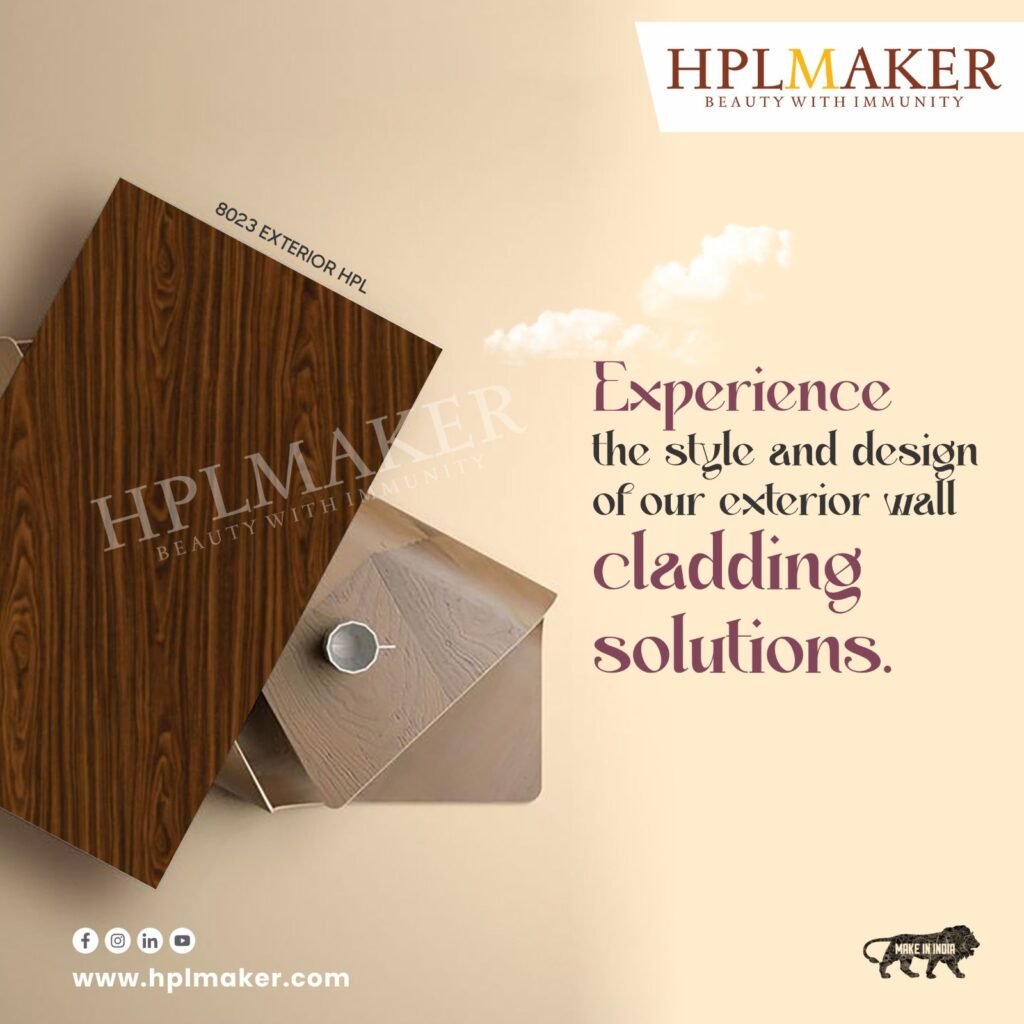Table of Contents
ToggleIs HPL Sheet waterproof?
HPL and its multi-fold properties –
Waterproofing – A characteristic that made HPL sheet noteworthy!
HPL (High Pressure Laminates) is becoming one of the most preferred options for exterior and interior elevation due to its superior performance qualities. The secret of a good HPL product lies in its manufacturing process and material quality. In HPL Maker, we have our manufacturing unit and we never compromise on quality – from raw material to machines to premises to process, we make sure that the final product is intact with utmost standard.
Understanding HPL Sheets:
Water Resistance – A key feature of HPL
Users are mostly concerned about the waterproofing feature of HPL, and we understand their concerns. Building a property is a long-term decision and it surely includes a person’s emotional involvement in it as well. While we are discussing HPL, it is suitable to state that HPL Maker’s HPL is safe to use for your long-term and short-term projects, our HPL sheets are waterproof, termite proof, durable, no delamination, etc. So, if you are planning to purchase HPL sheets, consider these points and make an informed decision.
Why HPL is suitable for your project
Properties of HPL Sheets -
- Wear Resistance: HPL is wear resistant and hence it has a long life.
- Scratch and Impact Resistance: HPL can withstand scratches and impacts which provides a fresh look and longevity to the product.
- Moisture and Heat Resistance: HPL is moisture-resistant for kitchens, bathrooms, and other areas prone to water exposure. Heat-resistant HPL is crucial for surfaces near stoves or heat sources.
- Chemical Resistance: HPL can resist chemicals and stains and hence it is suitable for lab and industrial use.

HPL Sheet can resist water – An important feature
Factors impacting the water resistance performance of HPL:
Manufacturing quality: The quality of the materials used and the manufacturing process are important factors. Exquisite HPL sheets with outstanding water resistance are more likely to be produced using high-quality materials and precision manufacturing techniques.
Edge Banding: Sealed and completed edges must be done correctly. Insufficient sealing at the edges could allow water to get into the HPL sheet’s core and weaken its ability to withstand water.
Installation: Ensuring that HPL sheets are water-resistant requires careful installation techniques. Maintaining the integrity of the material requires installers to use adhesives and sealants that are suggested by the manufacturer and adhere to their specifications.
Maintenance: Regular cleaning and inspections contribute to the longevity of HPL sheets’ water resistance. Over time, problems related to water can be avoided by promptly repairing any wear or damage.
The versatility of the HPL sheet allows it a super product that has better resistance to abrasion, heat, water, and general wear and tear. HPL is ideal for usage in a variety of settings, particularly restrooms because its surface is waterproof. Because HPL is so widely used and resilient, it’s a great option for business toilets and workplaces.
Conclusion:
“The closed-cell structure and the protective melamine resin overlay are the main reasons why HPL sheets are renowned for their water-resistant qualities. Even though HPL is resistant to moisture, its long-term water resistance depends on several factors, including the quality of the manufacturing process, appropriate edge sealing, good installation, and routine maintenance


